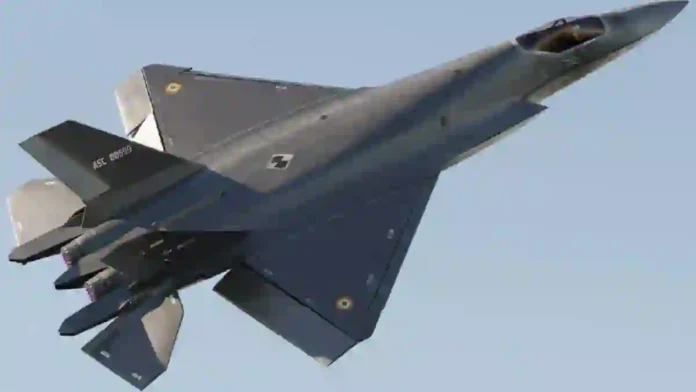India has made a significant leap towards developing its indigenous fifth-generation stealth fighter jet with the recent approval of the execution model for the Advanced Medium Combat Aircraft (AMCA) program. Defence Minister Rajnath Singh’s clearance enables the Aeronautical Development Agency (ADA), under the Defence Research and Development Organisation (DRDO), to spearhead the project in collaboration with industry partners from both the public and private sectors.
Unlike previous indigenous fighter projects such as the TEJAS series, where Hindustan Aeronautics Limited (HAL) was the primary production partner, the AMCA program will invite expressions of interest from a broader spectrum of potential partners. This could include HAL, private sector companies, or joint ventures between them, marking a bold shift towards greater private sector participation and competition in India’s aerospace industry.
Read- Modi’s Direct Rebuke To Trump Marks A Doctrinal Shift In Indian Diplomacy
The AMCA is envisioned as a stealth-heavy, multi-role platform featuring advanced technologies such as a low radar cross-section, super-cruise capability, integrated sensor fusion, advanced avionics, and internal weapons bays.
It is designed to perform a range of missions, including air superiority, ground strike, suppression of enemy air defences, and electronic warfare, and is intended to eventually replace the Sukhoi Su-30MKI as the backbone of the Indian Air Force’s fighter fleet.
The first prototype is expected to fly by 2029, with development slated for completion by 2034 and mass production targeted for 2035, aligning with global timelines for similar fifth-generation fighter programmes.
A crucial lesson highlighted by DRDO Chief Samir V Kamat, especially in the aftermath of Operation Sindoor, is the imperative for all weapon systems to function autonomously in electronically denied environments.
Operation Sindoor underscored the reality that future conflicts may involve the denial of GPS and communications, necessitating the development of fully autonomous weapon systems capable of operating independently of external electronic support.
Read- India’s Hypersonic Glide Missile To Be Ready In 2–3 Years: DRDO Chief
This insight is shaping the design philosophy for the AMCA and other indigenous platforms, ensuring they are robust against electronic warfare and can maintain operational effectiveness in contested battlespaces.
Furthermore, Operation Sindoor served as a real-world validation for indigenous military equipment, boosting confidence in their reliability and enhancing prospects for defence exports.
The successful deployment of systems like the Akash missile and Akashteer air defence during the operation demonstrated the combat-readiness of Indian technology and is expected to increase international interest in Indian defence products.
The AMCA program represents not only a technological milestone for India’s aerospace ambitions but also a strategic shift towards greater industry collaboration and a focus on operational autonomy in modern warfare.
Lessons from recent operational experiences, particularly Operation Sindoor, are directly informing the programme’s priorities, ensuring that India’s next-generation fighter is both technologically advanced and resilient in the face of evolving electronic warfare threats.
IDN
Agencies




